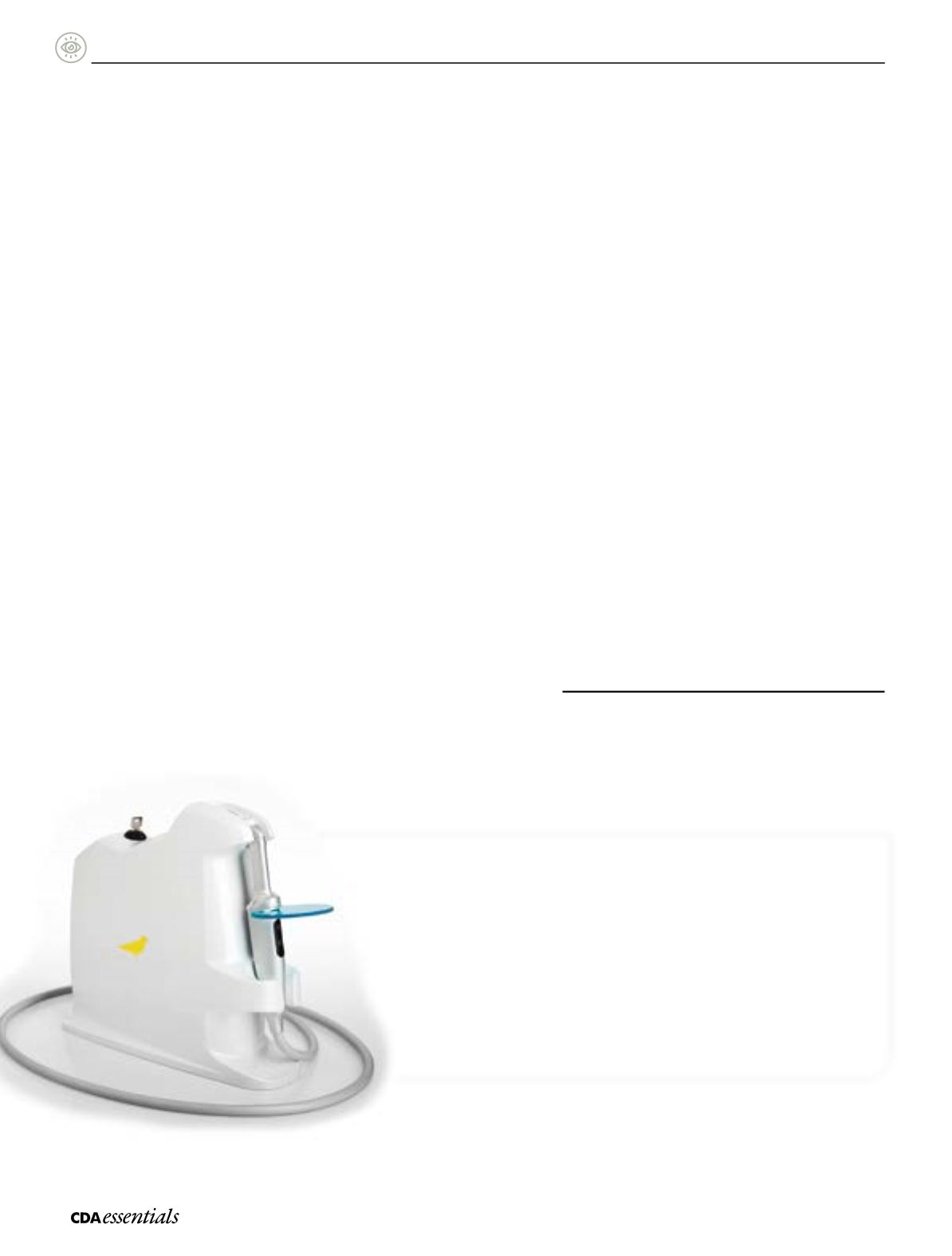

26
|
Volume 1 Issue 7
I
ssues and
P
eople
What do you think is the key factor
in managing dental caries
successfully?
Patient engagement. If your patients aren’t
engaged in managing any disease process,
there’s going to be no success. Patients need
to understand what the disease is, and we as
clinicians need to provide them with quantifiable
information so they understand whether
things are improving or worsening. For caries
management, it’s about lesion progression or
regression. If it’s growing, we need to engage the
patient in behavioural changes.
Are there new tools to help us engage our
patients better?
Yes, there are. What I would advise dentists to
look for in a tool is one that’s linked to the
disease process—in caries it’s measuring
change in crystalline structure—that is backed
by good science and solid evidence with
results that are quantifiable, and that patients
can understand.
For example, my patients don’t understand what
that little interproximal spot is when I show them
radiographs. But when I give them a number with
a scale, they begin to understand. So looking at
devices that have repeatable, numerical results is
key. Moreover, patients have to understand what
the device is measuring.
Would you say “caries medicine” is the future
of caries management?
It has to be. We need to look at the fees for the
various services. Because when you think about
it, what’s considered prevention isn’t actually
disease prevention—it’s disease treatment. We
need enough support for practices to run a robust
preventive program, as well as a program that
covers the cause of the lesion. Prevention is in my
opinion undervalued at times. Yet that’s the one
thing that’s going to make the biggest difference
down the road.
How can organized dentistry support the
evolution of caries management?
Organizations can provide the profession with
access to literature and speakers, and knowledge
on how to critically evaluate the literature. They
can also advocate for a fee or reimbursement
system that provides support so we can treat
disease early in its process.
Finally, organized dentistry can message the fact
that it’s important that dental diseases be treated
in what I call a “dental home,” an environment
where the dentist becomes the person who
supervises, and is actively involved in, the
management of the caries disease process across
its spectrum.
a
This interviewhasbeencondensedandedited.
Theviewsexpressedarethoseoftheauthorsanddonotnecessarilyreflecttheopinionsor
officialpoliciesoftheCanadianDentalAssociation.
The Canary System
The Canary System, developed by Dr. Abrams and his team at Quantum Dental
Technologies, uses a laser to measure both release of heat and reflected light
from the tooth surface. The device provides information on the presence and
extent of carious lesions up to 5 mm beneath tooth surface, including in
the interproximal areas, cracks, beneath sealants and around the intact
margins of restorations. It uses a numbering system to help patients
understand if lesions are improving or worsening.


















